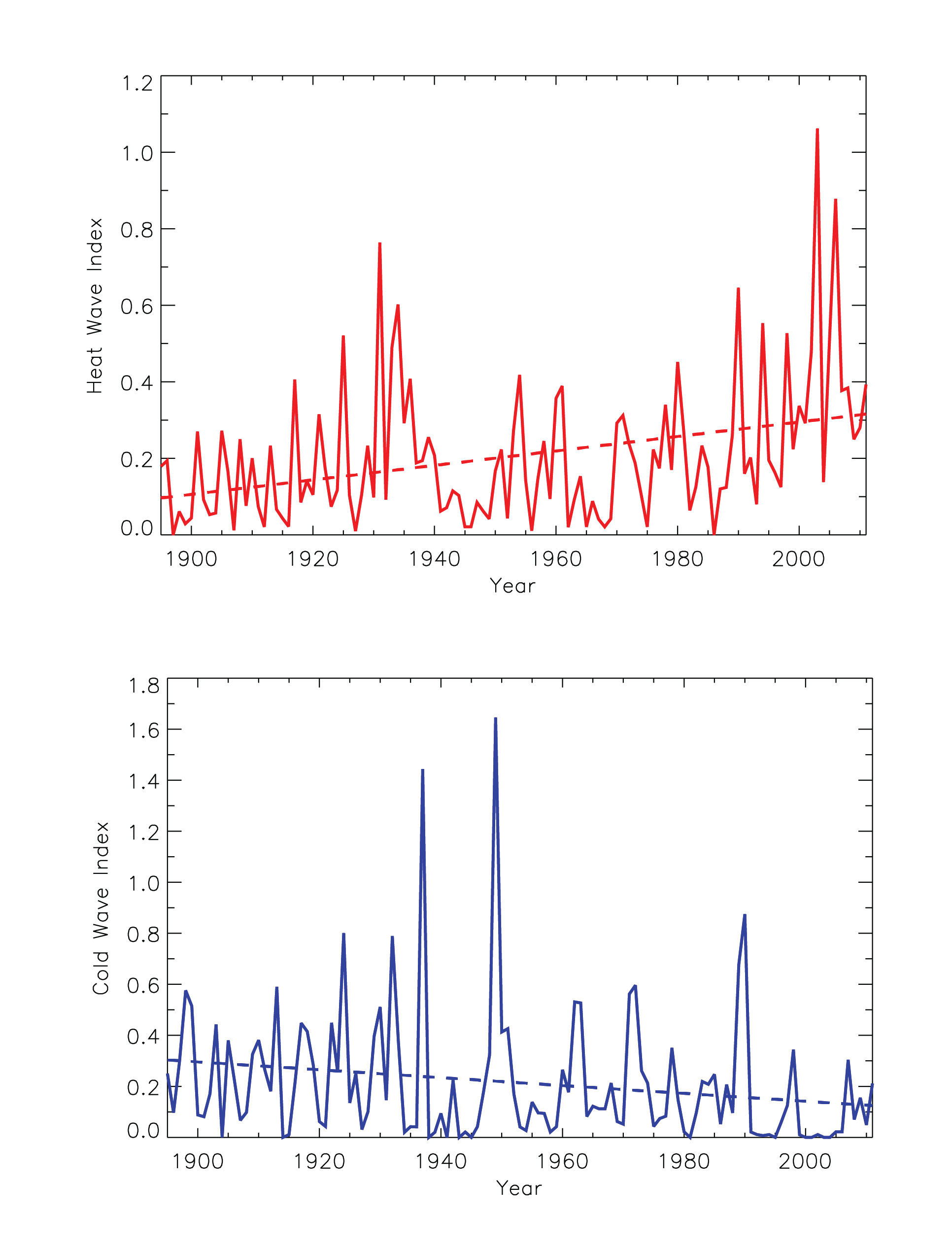General Information
Time series of an index for the occurrence of heat waves (top) and cold waves (bottom), defined as 4-day periods that are hotter and colder, respectively, than the threshold for a 1 in 5-year recurrence, for the Southwest region. The dashed line is a linear fit. Based on daily COOP data from long-term stations in the National Climatic Data Centers Global Historical Climate Network data set. Only stations with less than 10% missing daily temperature data for the period 1895-2011 are used in this analysis. Events are first identified for each individual station by ranking all 4-day period mean temperature values and choosing the highest (heat waves) and lowest (cold waves) non-overlapping N/5 events, where N is the number of years of data for that particular station. Then, event numbers for each year are averaged for all stations in each 1x1 degree grid box. Finally, a regional average is determined by averaging the values for the individual grid boxes. This regional average is the index. There is a statistically significant upward trend in heat waves. The most intense heat waves occurred in the 1930s and 2000s.There is a statistically significant downward trend in cold waves and the number of intense cold wave events has been low during the last 15 years.
Data Type:
Observed
Variable Type:
Temperature
Region:
Source Information
Data Source(s):
Image Source:
Laura Stevens
Files

